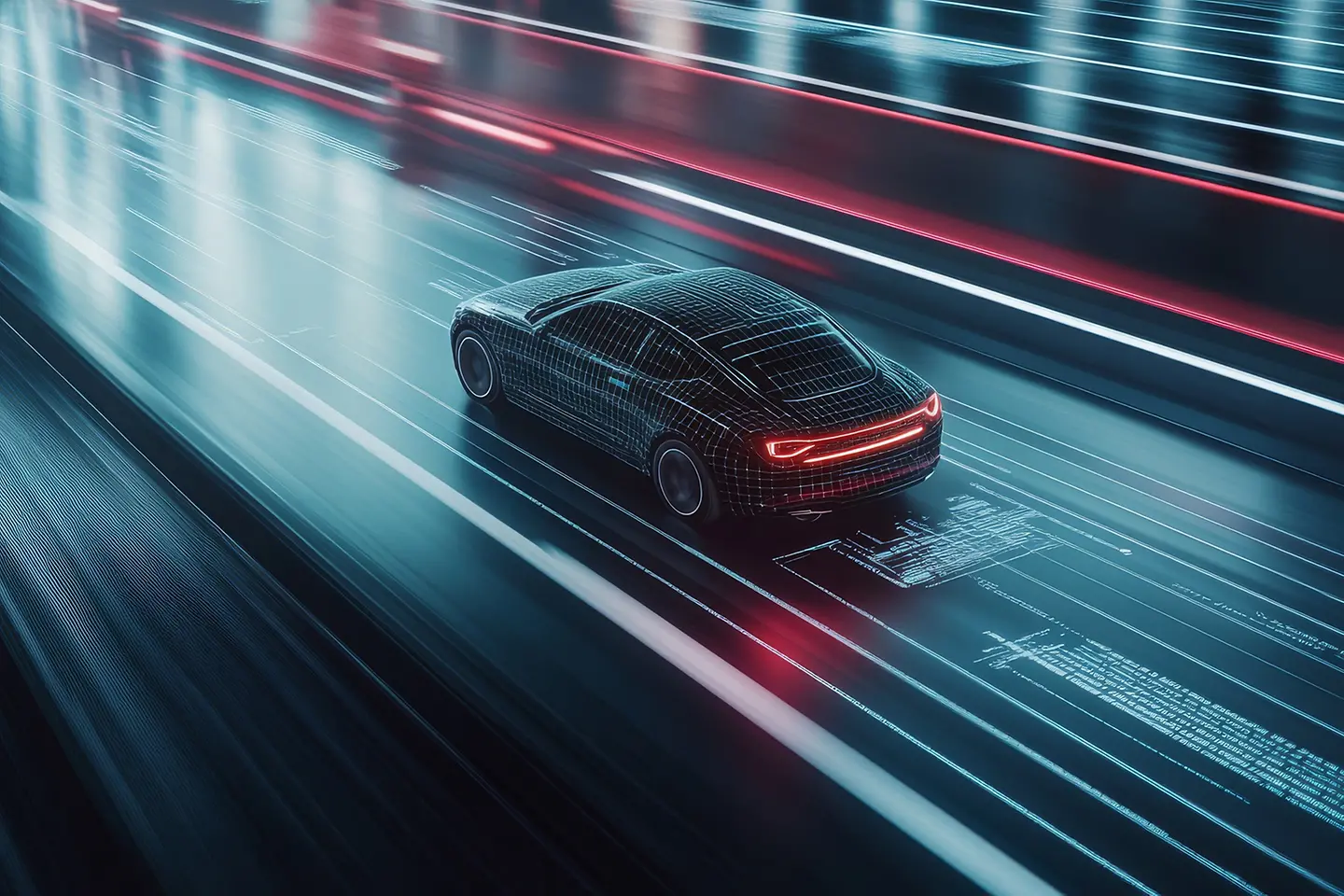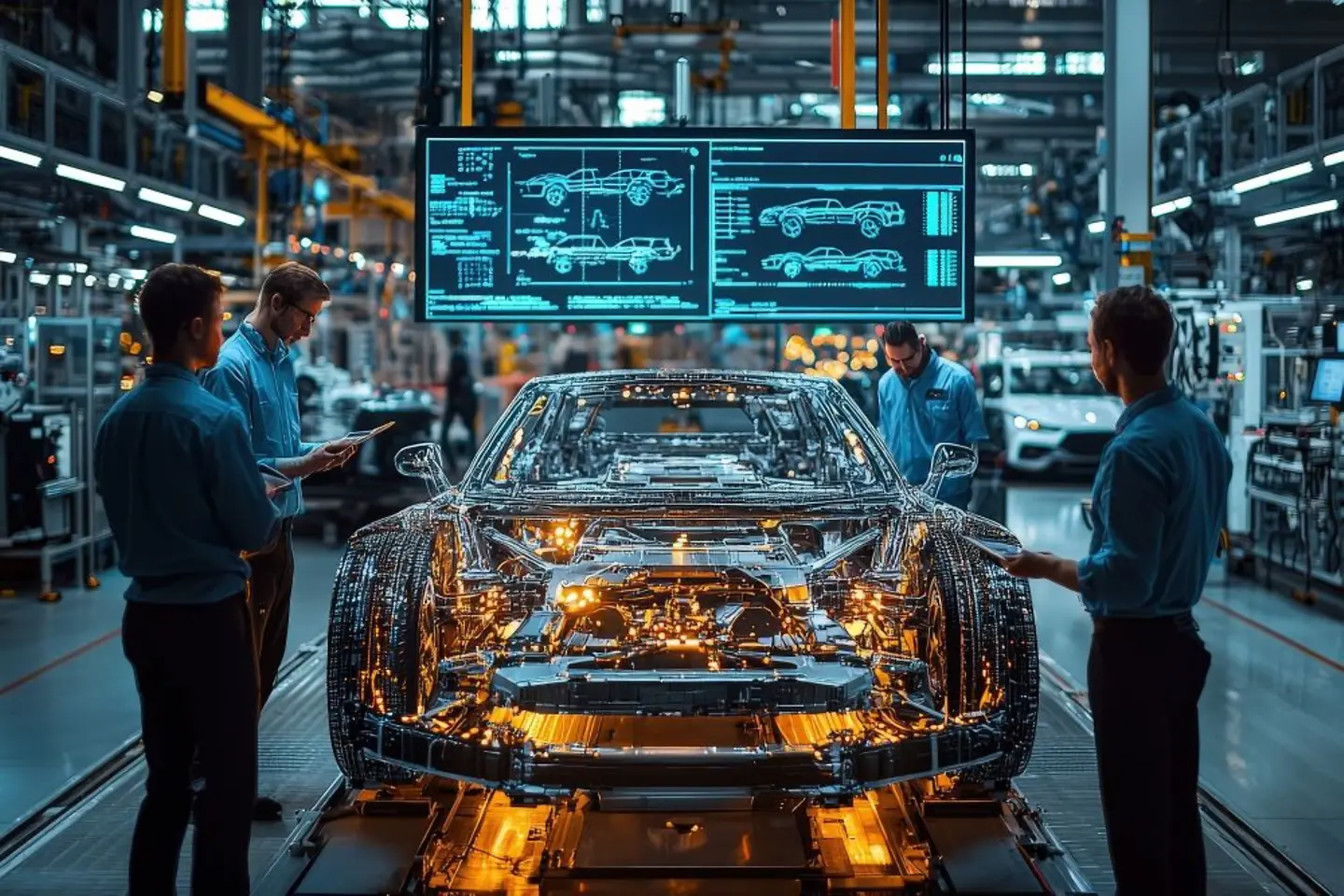
From combustion engine technology into the electric car world: The automotive sector is facing enormous technical, economic, and socio-ecological challenges. Digitalization of business processes at all levels with levers such as cloud computing and artificial intelligence. At the same time, new competitors have appeared on the market, putting pressure on the incumbents in terms of technology and price. And the price competition continues because the car is less of a status symbol. Horsepower has been replaced by systems that bring the passenger to their destination as safely, comfortably and entertained as possible.
In cars, software is increasingly becoming a core component. It centrally controls the drive, chassis and infotainment. The separation of software and hardware in combination with the connected vehicles opens up completely new possibilities for the lifecycle of the product. Over-the-air software updates constantly improve the car or add new functions. And in the future, the connected car will be able to communicate more and more with other vehicles – or with traffic lights. Data volumes are increasing and with it the need for large, flexible data storage devices such as cloud computing. And the artificial intelligence brings the horsepower to the road.

We will be able to implement ideas more quickly, likely within a day. This will not only apply to apps, but also to the software in the car.
Dr. Christian Hort, Senior Vice President Automotive, T-Systems International GmbH
One of the most astonishing developments is artificial intelligence. Initially, AI functioned as an advanced response system, and then it evolved to create images and videos. Now the AI can think about a question and develop relatively complex solutions. For instance, we use Agentic AI to program customer apps. In twelve minutes, we programmed several functions for the app based on our AI Engineer, such as “Find car”, “Turn on the lights”, and “Set the air conditioning”. It took one minute to define the task, six minutes for programming, and five minutes for testing. Three apps have been created, namely for iOS, Android, and a WebApp, as well as a module for the backend. The AI wrote a total of 30,000 files, almost 250 megabytes of data. In classic working mode, it would have taken us about six months. And this is just the beginning. We will be able to implement ideas more quickly, likely within a day. This will not only apply to apps, but also to the software in the car.
The separation of hardware and software in cars offers huge opportunities. If the car is connected, it is always up-to-date. Despite being five years old, the vehicle maintains state-of-the-art software technology, much like a PC. This is made possible by software updates through the air. Sounds trivial, but it’s not. And I know what I’m talking about. We support around 30 million vehicles worldwide in terms of over-the-air updates. It’s a choreography. When will each vehicle receive which update? The answer depends on the time zone and usage. At the same time, we have a technical trick up our sleeves. We only transfer the changes in the software, not the entire software package, as is often the case. This approach saves us up to 97 percent in program code and time. Then drivers read this message: “Software update – please wait” less when they press the start button.
However, new hurdles also arise with the software updates. If the update is security-relevant, the operating license can expire. A change to the system for warning about lane departure is enough. This requires a new loop via the Federal Motor Transport Authority for registration – technical speak: homologation. Previously, the procedure was needed only once for each vehicle model, but now vehicles can receive several updates every month, which are also safety-relevant. Therefore, homologation must be carried out much more quickly. But digitalization can also solve this challenge. Virtual tests of countless driving situations in the cloud shorten the testing process. Thus, the cloud supports automated processes such as the continuous validation and homologation of software updates over the entire life cycle of a vehicle. The scalability of the cloud allows us to carry out these processes efficiently for a large number of vehicles. And T-Systems is the only company that can offer both information technology and communication from a single source, from A to Z, for the software-defined vehicle.

Digitalization begins on the drawing board when a new car or a production hall is designed. Teams of designers, engineers, suppliers, and even customers are increasingly working together on the new vehicle. Product Lifecycle Management (PLM) provides a structured and systematic approach to managing the entire product lifecycle, from concept to development to end-of-life.
With NVIDIA Omniverse, teams are planning new factory floors. The digital twin not only depicts space but also all machines and people. T-Systems hosts NVIDIA Omniverse on a secure, GDPR-compliant European cloud platform. The company handles the migration and management of the platform for customers. The data can be used to simulate the waste heat from machines in the room, for example. The simulation then shows whether the exhaust air systems are correctly dimensioned and are also in the right place. This reduces construction costs by up to 30 percent, and the start of production is on schedule.
But even if the factory floor is in place, the NVIDIA Omniverse helps. Are there any plans to establish new production lines to accommodate new models? Are there any new robots being produced? New tasks for the employees? The digital twin depicts man and machine. This feature allows planners to explore all constellations and find the best solution.
Another example of digital twins: the Battery Pass. In the future, it will document the entire life cycle of an electricity storage system up to recycling. It will be mandatory for all batteries weighing more than 2 kWh that are introduced to the EU market starting in February 2027. It is an eco-label and at the same time it helps to determine the residual value of a battery and to process or dispose of it professionally. To this end, suppliers, battery and vehicle manufacturers share their information via data rooms such as Catena-X. Based on GAIA-X principles, T-Systems also ensures that both the origin and the data itself can be verified.
The automotive industry traditionally works with many suppliers. The requirements for supply chain resilience are high. In addition, there is compliance with regulations, sustainability, and compliance with regulatory requirements. This increases the need for information. Anyone who transmits data today does not know what happens to it. A sovereign data infrastructure such as the Catena-X data ecosystem for the automotive industry provides a remedy. Data always remains with the owner. He only shares the data via the Internet and grants certain rights. This so-called data space obeys the rules of Gaia-X. Deutsche Telekom is a founding member of Catena-X, while T-Systems has a stake in the operating company Cofinity-X and provides core services for it.
Cloud computing has long since become standard in companies. The largest providers are all based in the USA. Hence, the legislation of the USA collides with that in European laws regarding data privacy. But there are also solutions for the sovereign cloud in Europe. The data center is then located in Europe and the operation is in the hands of European employees. In addition, the hardware is tested and the software is based on open source. This is the case with the Open Telekom Cloud from T-Systems, for example.